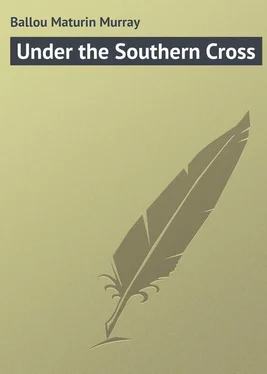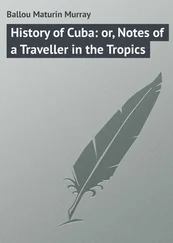Maturin Ballou - Under the Southern Cross
Здесь есть возможность читать онлайн «Maturin Ballou - Under the Southern Cross» — ознакомительный отрывок электронной книги совершенно бесплатно, а после прочтения отрывка купить полную версию. В некоторых случаях можно слушать аудио, скачать через торрент в формате fb2 и присутствует краткое содержание. Жанр: foreign_prose, Путешествия и география, на английском языке. Описание произведения, (предисловие) а так же отзывы посетителей доступны на портале библиотеки ЛибКат.
- Название:Under the Southern Cross
- Автор:
- Жанр:
- Год:неизвестен
- ISBN:нет данных
- Рейтинг книги:3 / 5. Голосов: 1
-
Избранное:Добавить в избранное
- Отзывы:
-
Ваша оценка:
- 60
- 1
- 2
- 3
- 4
- 5
Under the Southern Cross: краткое содержание, описание и аннотация
Предлагаем к чтению аннотацию, описание, краткое содержание или предисловие (зависит от того, что написал сам автор книги «Under the Southern Cross»). Если вы не нашли необходимую информацию о книге — напишите в комментариях, мы постараемся отыскать её.
Under the Southern Cross — читать онлайн ознакомительный отрывок
Ниже представлен текст книги, разбитый по страницам. Система сохранения места последней прочитанной страницы, позволяет с удобством читать онлайн бесплатно книгу «Under the Southern Cross», без необходимости каждый раз заново искать на чём Вы остановились. Поставьте закладку, и сможете в любой момент перейти на страницу, на которой закончили чтение.
Интервал:
Закладка:
Speaking of fruits, we were informed that on the neighboring island of Maui, one of the most spacious and mountainous of the group, is the largest apple-orchard in the world. The natives call this fruit ohias . The forest of apple-trees stretches from sea to sea far up the mountains. The trees vary from forty to fifty feet in height, yielding their harvest from July to September, during which period they are laden with a fair-sized, wild, white apple, which is not unpalatable to the taste, though not equal to the cultivated fruit. This orchard is estimated to cover an area of over ten miles wide and nearly twice as long. The trees, we were told, will average over twenty-five barrels of apples each. No commercial and little domestic use is made of them, but the fruit ripens, falls off the trees, and there decays annually. One peculiarity of the product is that when ripe the apples will keep sound but for a few days, as is the case with ripe bananas. The natives eat them to a moderate extent, but make no great account of them. We took the liberty of suggesting the possible advantage of a cider-mill, but our informant said, with a shrug of the shoulders, that there was not sufficient local enterprise to start the business.
The six inhabited islands of the Hawaiian group are Kauai, Oahu, Molokai, Lanai, Maui, and Hawaii, the last containing the largest active volcano on the globe; namely, that of Kilauea, to visit which many persons cross the Atlantic and Pacific oceans, besides the continent of America, which lies between the two. Oahu, of which Honolulu is the capital, was chosen as the principal harbor because it is the only one presenting all the marine necessities, such as sufficient depth of water, space, and a secure anchorage for ships. In the olden days of Hawaiian history, Lahaina, on the island of Maui, was the city of the king, and the recognized capital. This was in the palmy days of the whale fishery. It has a sheltered roadstead, but will not compare with the present capital in this respect. The settlement is now going to ruin, the palace tumbling to pieces by wear and tear of the elements, and all the surroundings are a picture of decay. Should the Panama canal ever be completed, it would prove to be of immense advantage to these islands, as they lie on the direct course which a great share of navigation must follow. The aggregate population of the group is now about sixty thousand, of whom some thirty-eight thousand are natives. History tells us that Captain Cook estimated these islands to contain over three hundred thousand inhabitants when he discovered them. Perhaps this was an exaggeration, though it is a fact that they are capable of sustaining a population of even much greater density than this estimate would indicate. Until within fifty or sixty years the natives of the several islands made war upon one another, principally for the purpose of securing prisoners, whom they roasted and devoured. Indeed, cannibalism has existed in some of the islands even to a more modern date than that referred to. Of latter years the natives have shown a hearty desire to affiliate and intermarry with Europeans and Americans, discarding their idolatrous worship and professing Christianity; but those who read well-meant missionary reports can hardly realize how little this profession of Christianity generally signifies among semi-barbarous races. The manners, customs, and dress of the whites have been very generally adopted, so far as external appearances go; but as in the case of all other aboriginals who inhabit the Pacific isles, large or small, wherever the white man appears in numbers, the black disappears.
The crater of Kilauea on the island of Hawaii is still in a semi-active condition. Twice within our memory it has burst forth briefly but with enormous power, and at this writing it sends forth ceaseless vapor, smoke, and sulphurous gases, with occasional bursts of stones, lava, and crude metallic substances. The fiery opening is four thousand feet above the base of the mountain, the orifice having an estimated diameter of eight miles; that is to say, it is that distance across the opening. The height above sea-level is placed at six thousand feet.
One would surely think that such an enormous orifice on the earth's surface ought to be sufficient to relieve all the smouldering subterraneous fires and explosive gases confined beneath the crust of the habitable globe, saying nothing of Vesuvius, Etna, and a dozen other active volcanoes. In the year 1840 an eruption took place from the crater of Mauna Loa on the same island, which lasted nearly thirty days, and was of such body that the flood of lava ejected, running a destructive course of fifty miles, reached the sea, and added one quarter of a mile of territory to the area of Hawaii, raising also several hills of two hundred feet in height near the shore. Three subsequent eruptions occurred from this mountain, a few years intervening between them, the latest of which was in 1868. Were it not for this and other volcanic vents in the group, these islands in mid-ocean would doubtless be suddenly swallowed up by some great convulsion of the restless subterranean forces.
Some portions of the coast of Hawaii are indented by large and curious caves, which are the homes of thousands of sea-birds; but very little is known about them, as they have never been explored. It is natural, considering its active volcanoes, that earthquakes should be more common on this island than upon any other of the group. The population lives almost entirely near the coast; but where this people first came from not even cunning scientists pretend to know.
Leprosy is still prevalent among the natives, the victims of which dreadful disease are promptly isolated upon the island of Molokai, where there are now about a thousand sufferers confined. The island is in formation so mountainous that the natives call it Kaaina pali , – a land of precipices. Some portions can only be reached by water, and that in fair weather, the mountains being impassable. That portion occupied by the unfortunate lepers is a plain naturally cut off from the rest of the island by the pali of Kalae. Fully realizing the necessities of their case these people submit to their isolation without a murmur, and seem, as we were informed, comparatively content. A ration of five pounds of meat and twenty pounds of vegetables is issued to each person weekly, besides which they have garden-plats that they cultivate for such fruits, vegetables, and flowers as they choose. The supply of food furnished to them gratuitously is so much better than any Hawaiian gets under ordinary circumstances, that many persons are actually willing to make themselves lepers and be taken into this death-stricken community, in order to share its abundant provisions. There is here a little church wherein all the lepers congregate on Sundays, to listen to the preaching of a leper minister, and a day-school where the leper children are taught by a native schoolmaster afflicted with the same disease. We heard of a Roman Catholic priest who has devoted his life to these poor unfortunate outcasts, and who lives with them to comfort and aid them in their trials, though he is not himself a leper. This is indeed heroism, to brave the horrors of such an exile in the fulfilment of what he conceives to be his religious duty. If we knew the priest's name we would record it in this connection.
Like tropical regions generally, Honolulu does not lack for annoying insects and disagreeable as well as poisonous reptiles. That the mosquito reigns here goes without saying, and exhaustive measures are taken in every domestic establishment to afford protection against the ubiquitous pest. Our steamer, on the passage toward America, took on board five hundred packages of bananas, each bunch wrapped up in a covering of banana-leaf husks. The night after we sailed for San Francisco quite a commotion was created among the lady passengers, reinforced by the gentlemen, on the finding of huge roaches, scorpions, centipedes, and elephantine spiders meandering in and about the berths and the cabins. That the sensation experienced on awaking from sleep to feel a damp, slimy creature creeping slowly over one's face is excessively disagreeable, may be readily supposed. These reptiles and insects were brought on board in surprising numbers in the fruit packages, where they were securely hidden until they chose to come forth. The chief engineer of the ship prepared a number of bottles with proof spirit, in which a lot of these scorpions and centipedes were preserved, and which were secured by passengers curious in such matters. A young child was bitten by one of the mammoth spiders, causing its arm to swell up alarmingly, but the doctor treated the wound promptly with ammonia, and gave the little sufferer some internal medicine which seemed to act as an antidote to the poison.
Читать дальшеИнтервал:
Закладка:
Похожие книги на «Under the Southern Cross»
Представляем Вашему вниманию похожие книги на «Under the Southern Cross» списком для выбора. Мы отобрали схожую по названию и смыслу литературу в надежде предоставить читателям больше вариантов отыскать новые, интересные, ещё непрочитанные произведения.
Обсуждение, отзывы о книге «Under the Southern Cross» и просто собственные мнения читателей. Оставьте ваши комментарии, напишите, что Вы думаете о произведении, его смысле или главных героях. Укажите что конкретно понравилось, а что нет, и почему Вы так считаете.












